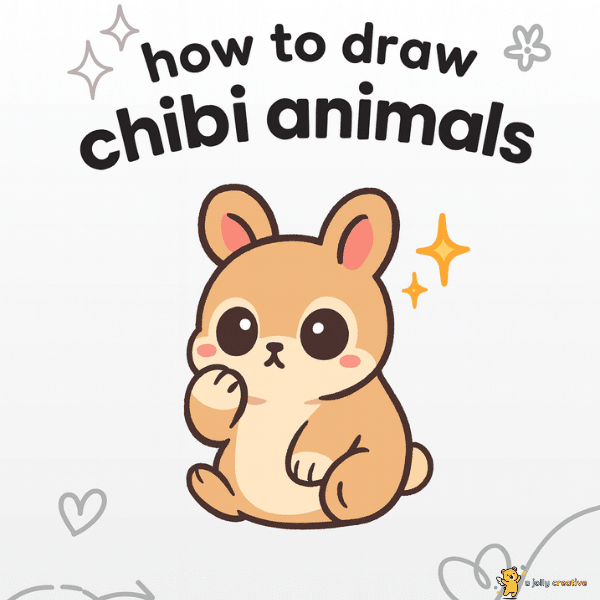Ever noticed how cute, big-eyed cartoon animals make you smile? Chibi animals are super adorable and so easy to draw, even for kids just starting out! These tiny creatures with big heads and tons of charm are perfect for creating fun art.
This guide makes learning to draw chibi animals a blast! You’ll go from a nervous beginner to a confident artist, sketching cute kawaii critters in no time. Grab a pencil and let’s bring these lovable chibi animals to life on your paper!
What Are Chibi Animals
Chibi animals originate from Japanese culture, where “chibi” translates to “small” or “short person.” This distinctive art style transforms realistic animals into adorable, simplified versions with oversized heads and tiny bodies.
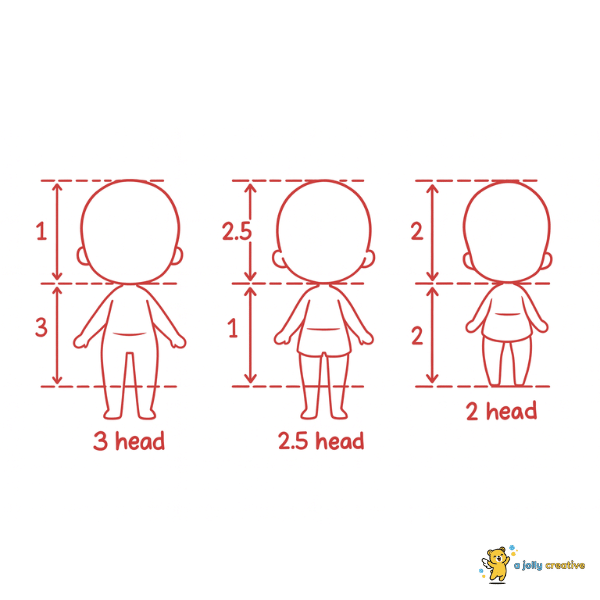
Traditional animal anatomy gets completely reimagined in chibi style. Real proportions disappear as heads become 50-70% of the total body size, while limbs shrink to stubby appendages.
You may also like to read: 25 Easy Cozy Stationery Drawing Ideas
Key Differences
Understanding the distinction between realistic and chibi animal art helps artists make intentional stylistic choices. Realistic animal drawings focus on accurate proportions, detailed textures, and anatomically correct features.
Chibi Animal Drawing Tutorial Step-by-Step
Mastering drawing chibi animals step by step begins with understanding fundamental construction principles. Every adorable creature starts with basic geometric shapes that stack together like building blocks.
1. Study Real Animals (Then Stylize)
Real animal observation provides the authentic foundation that makes chibi animal characters believable despite their exaggerated proportions.
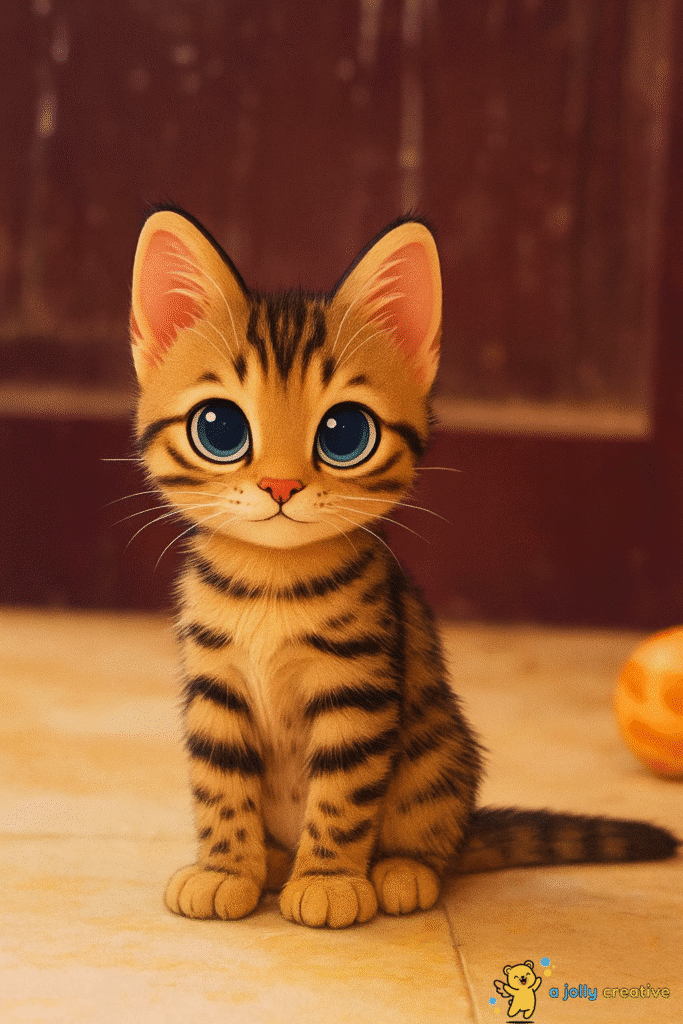
Spend time watching how different species move, rest, and interact. Notice unique characteristics like rabbit ear positions, cat tail movements, or fox facial expressions that define each animal’s personality.
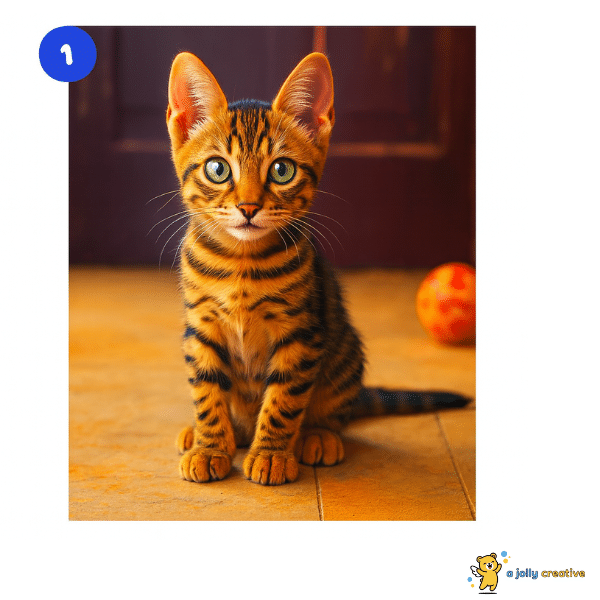
Stylization transforms realistic observations into kawaii magic. Identify each animal’s most distinctive features, then exaggerate these elements while minimizing others.
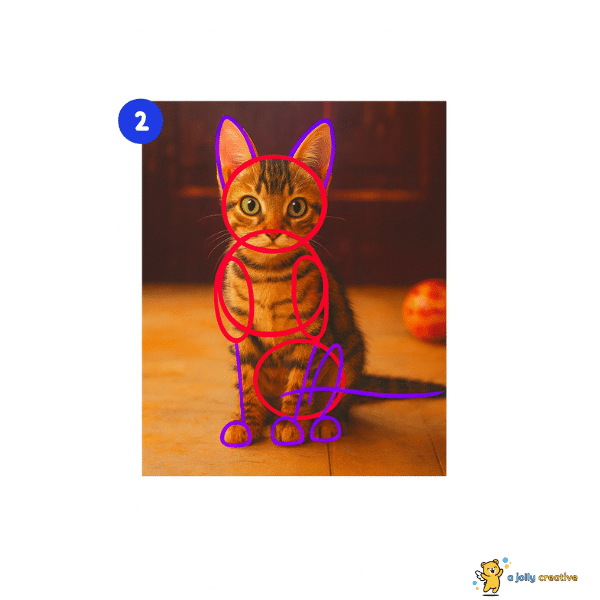
A fox’s pointed ears become oversized triangles, while its slender muzzle shrinks to a tiny button nose.
2. Start With a Big Round Head
The chibi animal head serves as the primary focal point and emotional center of your drawing. Begin every sketch with a large circle that occupies 60-70% of your planned character height.
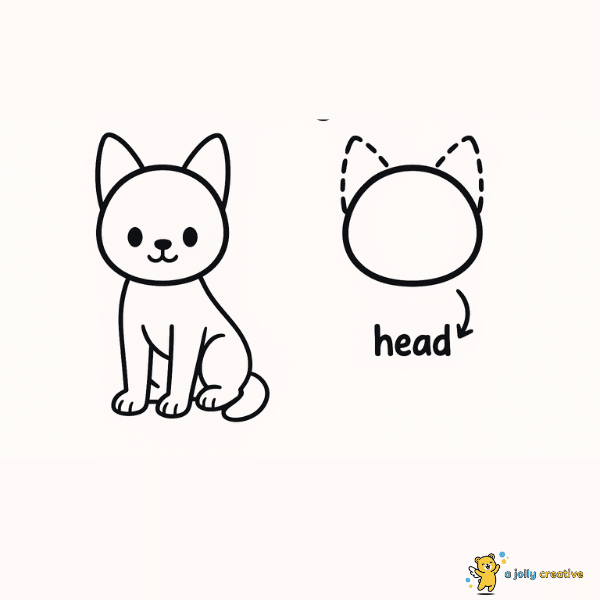
This massive head proportion triggers the “baby schema” psychological response that makes viewers find your creation irresistibly cute.
If you’re interested, check out: 41 Small Quick Doodles to Draw When Bored
3. Use a Simplified Tiny Body
Chibi creature bodies shrink to approximately one-third of realistic proportions, creating that distinctive top-heavy silhouette. Simple oval or pear shapes work perfectly for most quadrupedal animals.
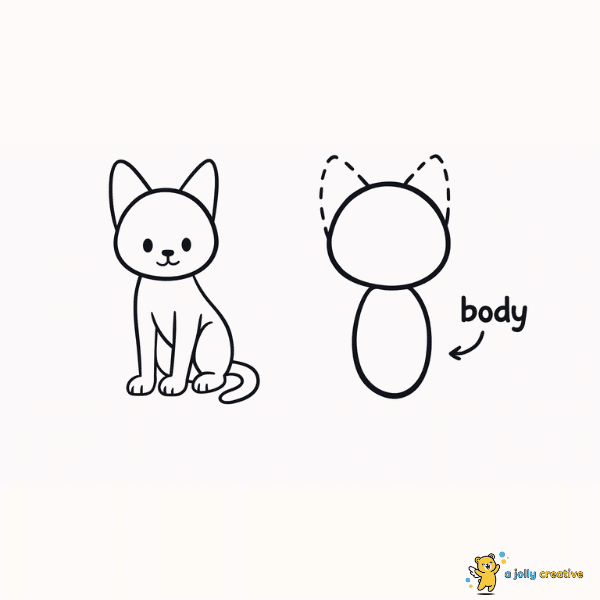
The goal involves suggesting body presence without overwhelming the dominant head element.
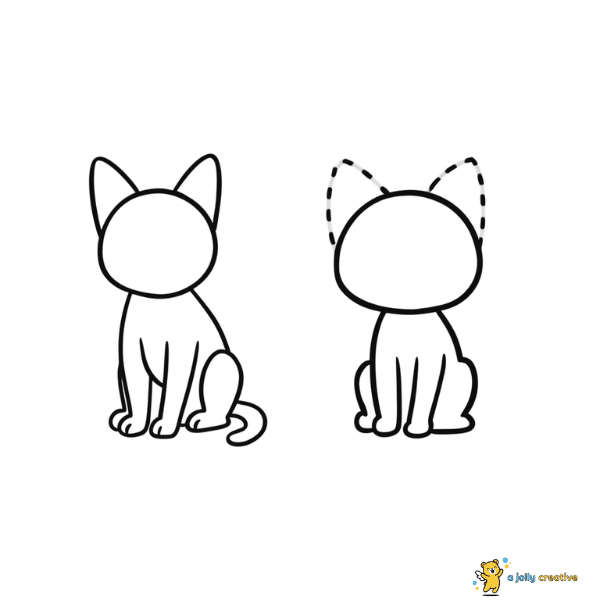
Chest areas typically expand slightly to suggest breathing life, while hindquarters taper gracefully. This subtle variation prevents your chibi from appearing completely geometric while maintaining overall simplicity.
4. Exaggerate & Round All the Shapes
Kawaii animals eliminate sharp angles wherever possible, replacing them with soft, rounded alternatives.
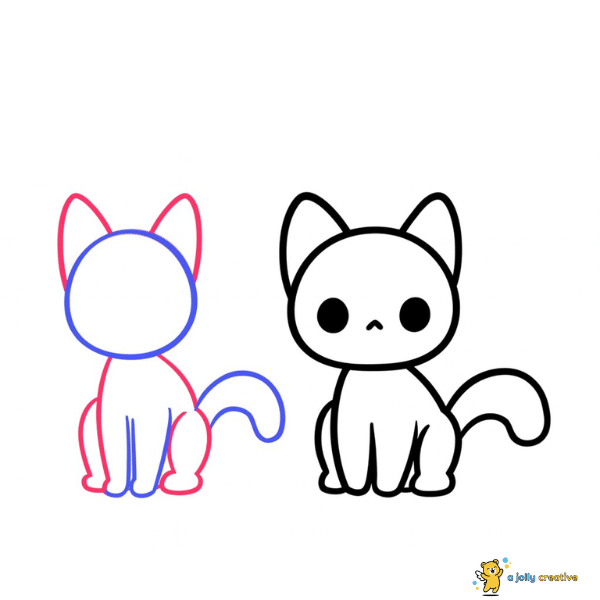
This universal rounding principle applies to every design element from ear tips to tail ends. Sharp corners create visual tension that conflicts with the peaceful, approachable aesthetic chibi art cultivates.
5. Simplify the Face with Big Eyes & Tiny Features
Chibi animal faces concentrate maximum emotional impact into minimal space through strategic feature sizing. Eyes dominate facial real estate, often occupying one-third of available head area.
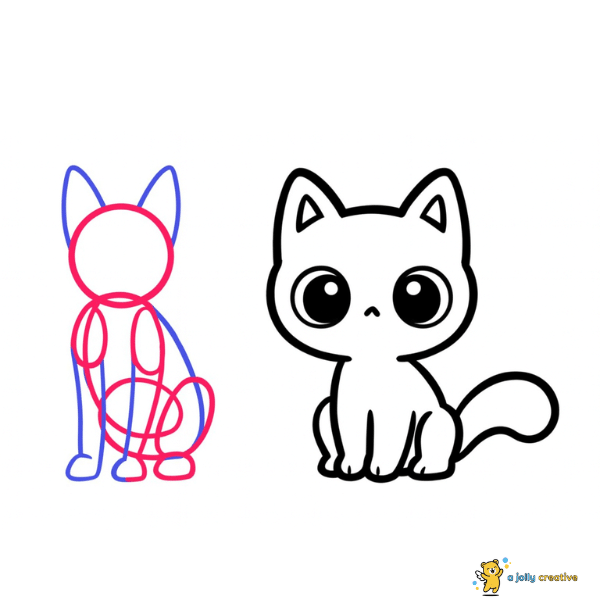
These oversized orbs become windows into your character’s soul, conveying personality through shape, color, and highlight placement.
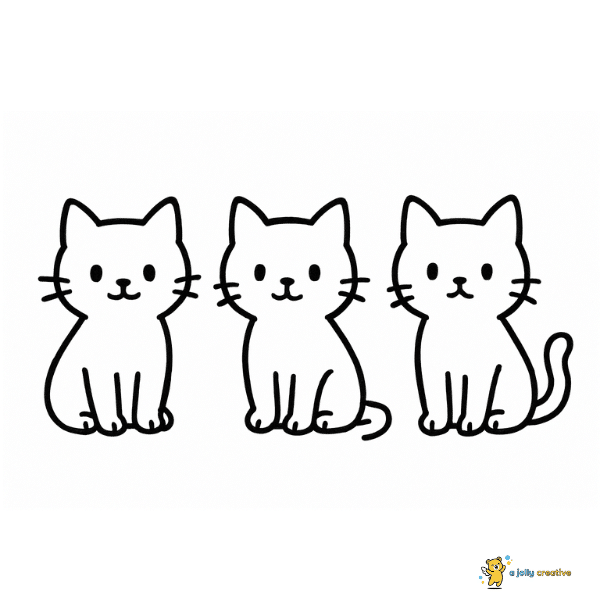
Nose reduction reaches extreme levels in true chibi style. Complex nostril structures disappear entirely, replaced by tiny dots, small triangles, or subtle shading suggestions.
You might find this interesting: Easy Birthday Drawing Ideas for Cards & Homemade Gifts
6. Add Personality Through Creative Poses
Sleepy Bunny with Droopy Ears represents a masterful example of personality-driven chibi design.
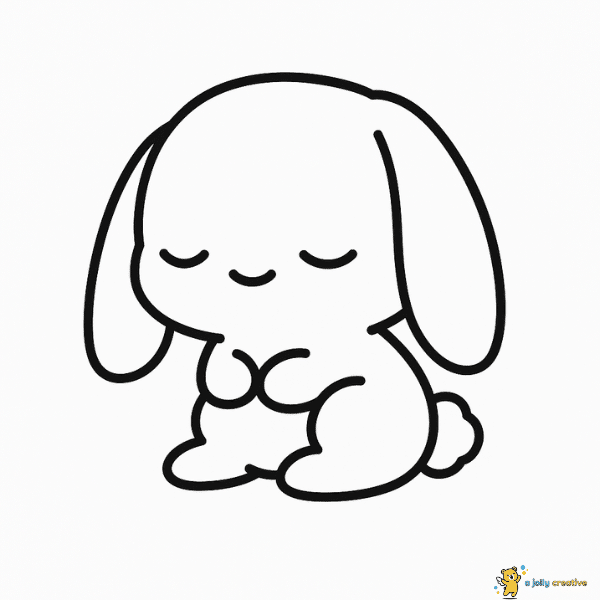
Closed, crescent-shaped eyes immediately communicate peaceful contentment, while naturally folding ears enhance the drowsy theme. This relaxed posture suggests trust and vulnerability that viewers find endearing
Chibi Rabbit Step by Step
Drawing chibi animals step by step comes together beautifully through rabbit demonstration. Begin with your foundation circle for the head, roughly two-thirds of your intended final height.
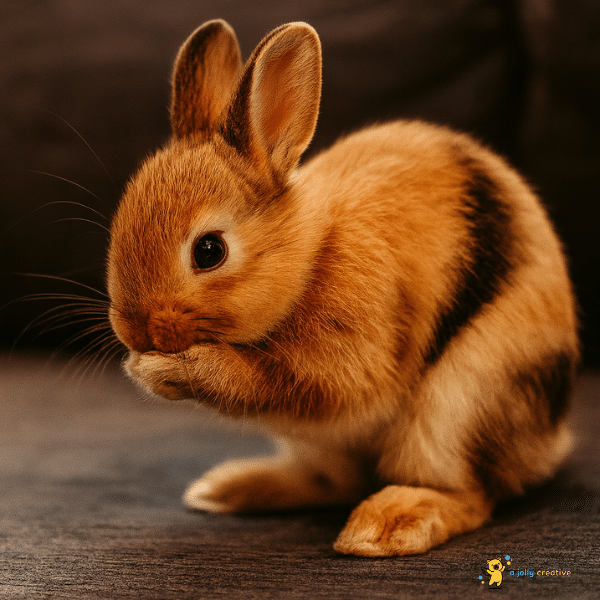
Add two elongated oval ears extending upward and slightly outward from the head’s upper portion.
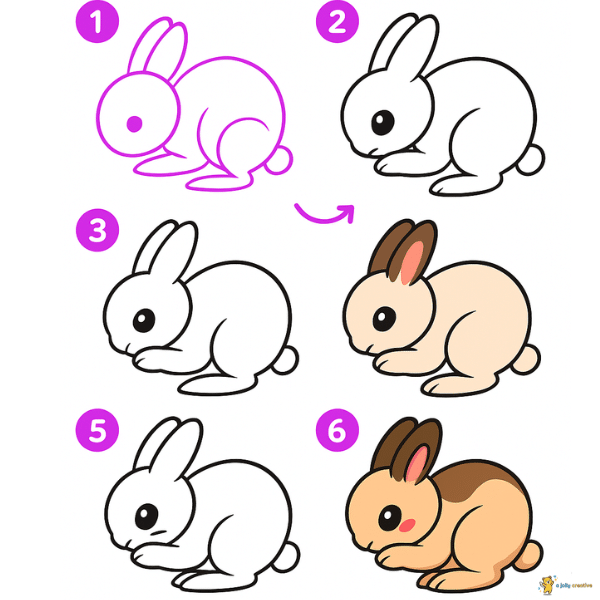
Body construction follows with a smaller oval positioned below and slightly behind the head circle. This offset placement creates depth while maintaining the essential top-heavy proportion balance.
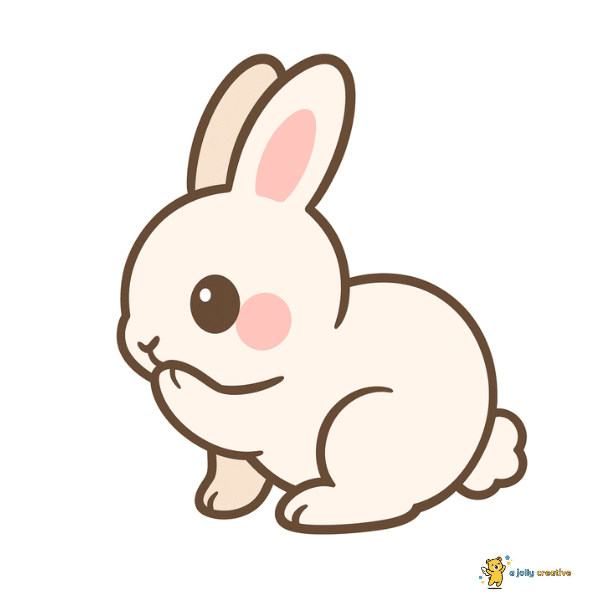
Connect head to body with gentle curve lines that suggest neck presence without adding bulk. Facial feature placement starts with eye positioning roughly one-third down from the head’s top edge.
1. Learn from Artists You Love
Studying professional chibi animal characters accelerates your artistic development dramatically.
Analyze how established artists handle proportions, color choices, and personality expression within kawaii constraints. Notice their unique approaches to eye shapes, ear positioning, and body construction techniques.
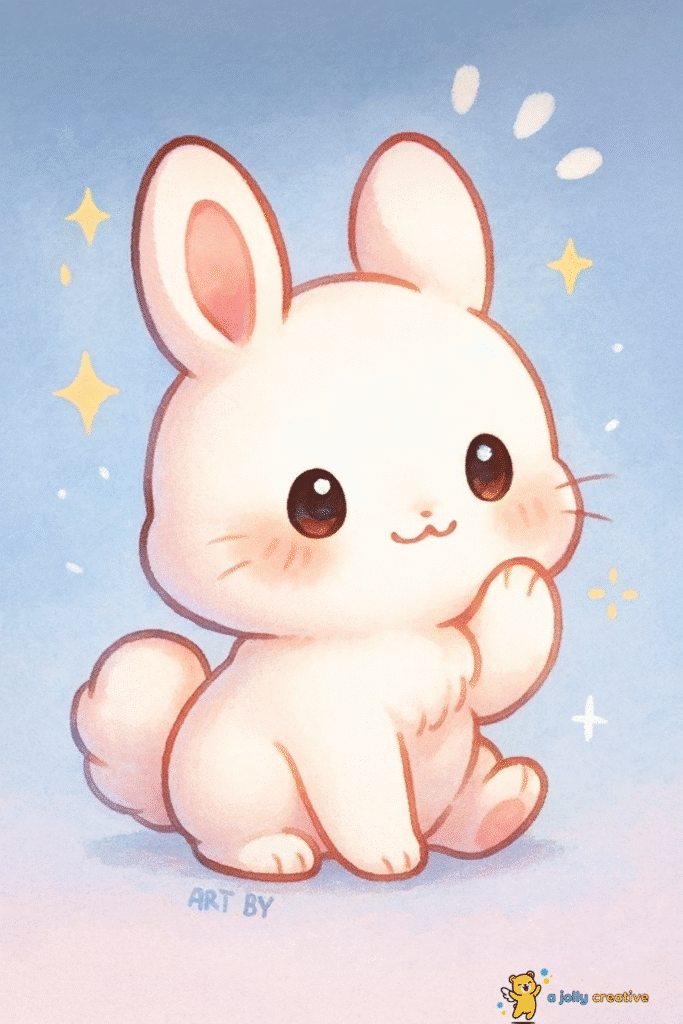
Adventurer Bunny with Tiny Backpack showcases how accessories enhance chibi animals without overwhelming their essential simplicity.
Continue on your article: 27 Cute Easy Whimsical Drawing Ideas
Final Tips for Drawing Chibi Animals
Chibi animal tutorial success depends heavily on consistent practice and patient skill development.
Daily sketching sessions, even fifteen-minute efforts, produce better results than sporadic marathon drawing attempts.
Your muscle memory develops through repetition, making complex shapes feel natural over time.
Reference collection accelerates improvement dramatically. Maintain digital folders organized by species, poses, and expressions for quick inspiration access.
Study professional kawaii art examples while developing your personal interpretation style.
Copying masters teaches technique, but originality emerges through individual expression.
Don’t miss our article on: Minimalist & Cute Small Tattoo Drawing Ideas You’ll Love
Wrap-Up Build Your Own Chibi Animal Style
Developing your signature chibi animal art style happens gradually through consistent experimentation and honest self-evaluation. Begin by mastering basic construction principles, then introduce personal flourishes that reflect your artistic personality.
Kawaii animals offer unlimited creative possibilities once you’ve internalized fundamental techniques. Species variation keeps your artwork fresh and challenging, while pose exploration adds dynamic interest.
Hi, I’m Hazel Finch, a creativity enthusiast and writer at ajollycreative.com. I share easy drawing ideas, cozy gaming tips, and inspiration for creative hobbies. With a love for all things jolly and relaxing, I aim to help others discover the joy of creating in their own unique way. Follow my journey as I explore the world of art and play, one cozy activity at a time.

